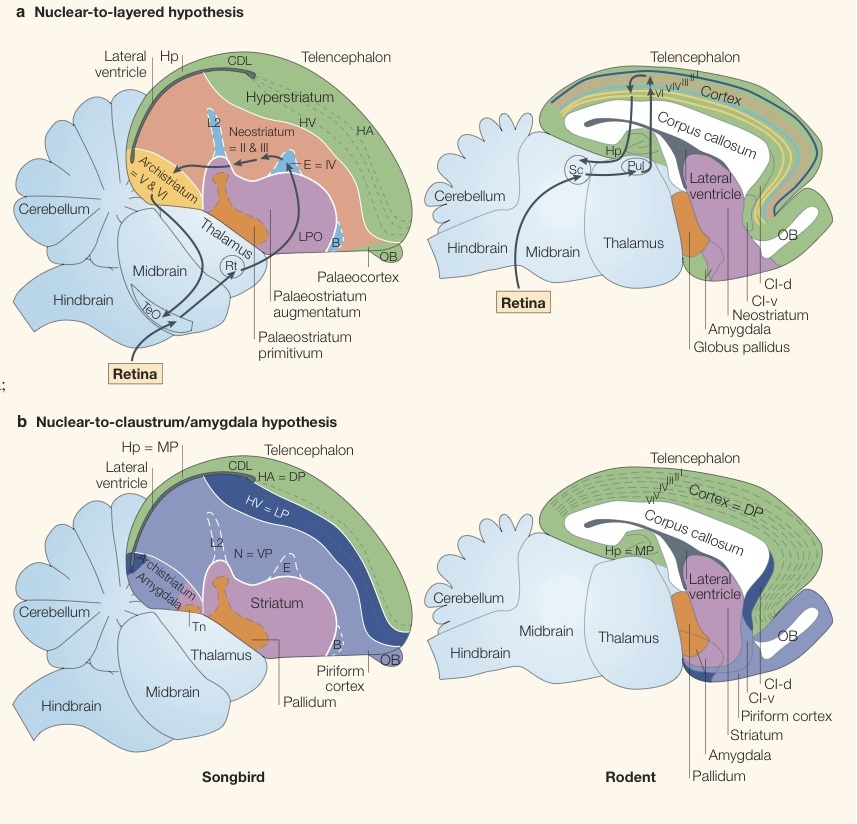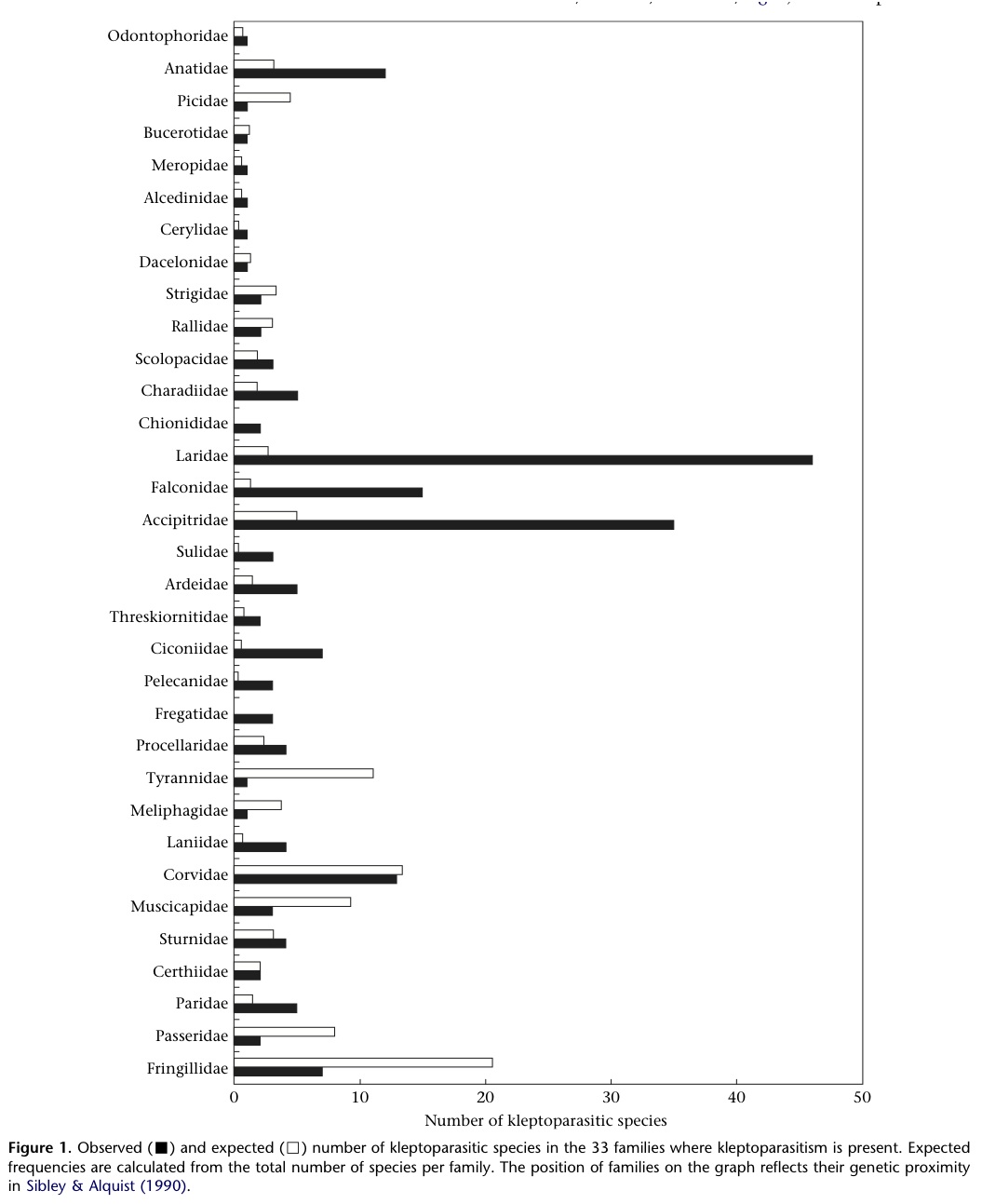Kleptoparasitism
Biology 342 Fall 2012
Erin Appleby and Ryan Streur
Phylogeny
Phylogeny is one of Tinbergen’s four questions that inquires about why a particular behavior has evolved in some taxa over another and considers conditions that might have shaped the behavior. Below is a chart that shows the observed and expected number of kleptoparasitic species grouped according to taxonomic family (Morrand-Ferron 2007). Most of the organisms in this website belong to the Procellaridae (petrels, shearwaters, prions) and Frigatidae (frigatebirds). Laridae, Falconidae, and Accipitridae are all birds of prey.
Kleptoparasitic families of birds are more likely to:
- have larger brains
- inhabit open habitats (such as the ocean)
- have vertebrate prey in their diet

Larger brain size is linked to higher cognitive function (Morrand-Ferron 2007). A kleptoparasite must select appropriate hosts, anticipate escape attempts, adjust the angle of attack, and consider wind conditions. For a kleptoparasite to make such critical decisions at each attempt of theft, it requires more complex cognitive abilities and a large, complex enough brain to support them than non-kleptoparasites.
In fact, the brain structure, called the pallium in mammals and birds are suggested to be homologous in some aspects. The pallium is the layered upper surface of the cerebrum, the region of the brain responsible for higher thinking. The mammalian neocortex and avian telencephalon (shown in green at right) are similar in connectivity, molecular profile, and function (Jarvis 2005, box 2).
For a more detailed explanation of these hypotheses and terms, click here. These similarities have been further explored behaviorally, using intelligence as the link between brain structure and ability to perform behaviors that involve a lot of thinking.
Convergent Evolution of Intelligence
Convergent evolution refers to the evolutionary processes by which a similar trait emerges in two lineages whose most recent common ancestor did not possess this trait. A simple example is a bird wing and a bat wing--the wing trait was clearly not inherited, but it emerged separately. Similarly, intelligence is a convergently evolved trait in apes and corvids, a family of birds that has the fourth highest number of kleptoparasitic species according to Morrand-Ferron’s chart (see top). High levels of innovation is a feature of intelligence in common between apes and corvids (Seed et al 2009, fig.1). A brown pelican (Pelecanus occidentalis) stealing food from a great blue heron (Ardea herodias) is considered innovation (Lefebvre, 1997). Scrub jays (Aphelocoma coerulescens) are an example of social learning of foraging techniques, an ability in common with apes (Seed et al 2009). The scrub jays’ food-storing and intraspecific kleptoparasitic behavior is linked to its convergently evolved brain, able to demonstrate theory-of-mind by engaging in a sort of “avian espionage” in hiding food stores. Theory of mind refers to the ability to think from the prespective of others. It is a convergently evolved ability because the most recent common ancestor of apes and corvids lived about 280 million years ago (Clayton and Emery 2005).
Open Habitats and Vertebrate Prey
Seabirds have a pretty darn open habitat--the ocean! The openness of a habitat can shape the emergence of food stealing in birds because a host is more vulnerable to attack in the open versus in a closed environment. The same skills and traits that enable a bird to capture vertebrate prey would also help to successfully steal food from hosts. Vertebrate prey can escape attacks more readily than non-vertebrates or fruits and seeds. The maneuverability in air, fast flight, and ability to anticipate avoidance behavior by prey directly aid kleptoparasitic attempts.
Kleptoparasitism as a Selective Force Itself
The kleptoparasitic practices of the arctic skua (Stercorarus parasiticus) has acted as a selective force shaping the evolution of the Kermadec petrel (Pterodroma neglecta). Kermadec petrels have a similar feather coloring to the arctic skua, and the skua never targets a Kermadic petrel as its host. Since the arctic skua does not kleptoparasitize those of its own species, Kermadec petrels with skua-like coloring are more fit because they won't be stolen from (Spear and Ainley 1993).
